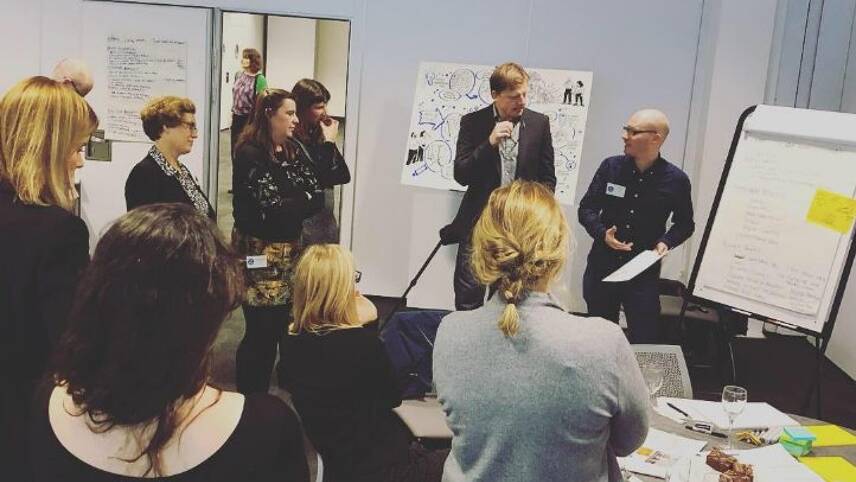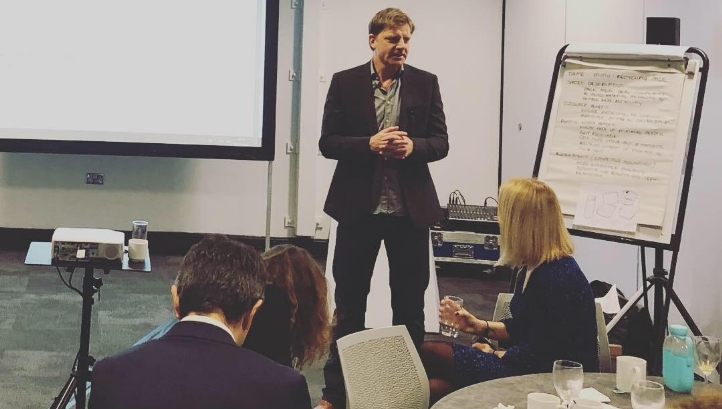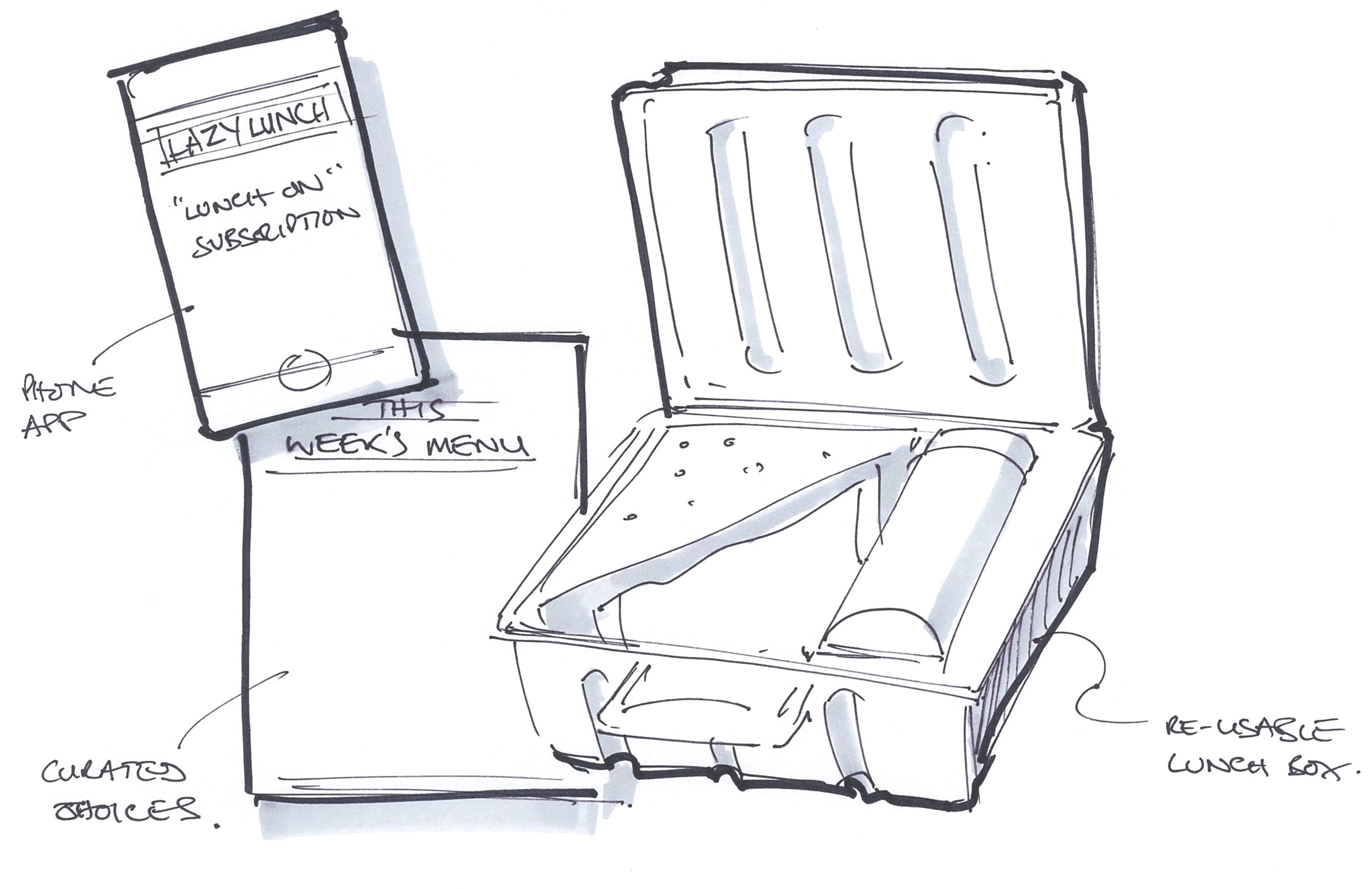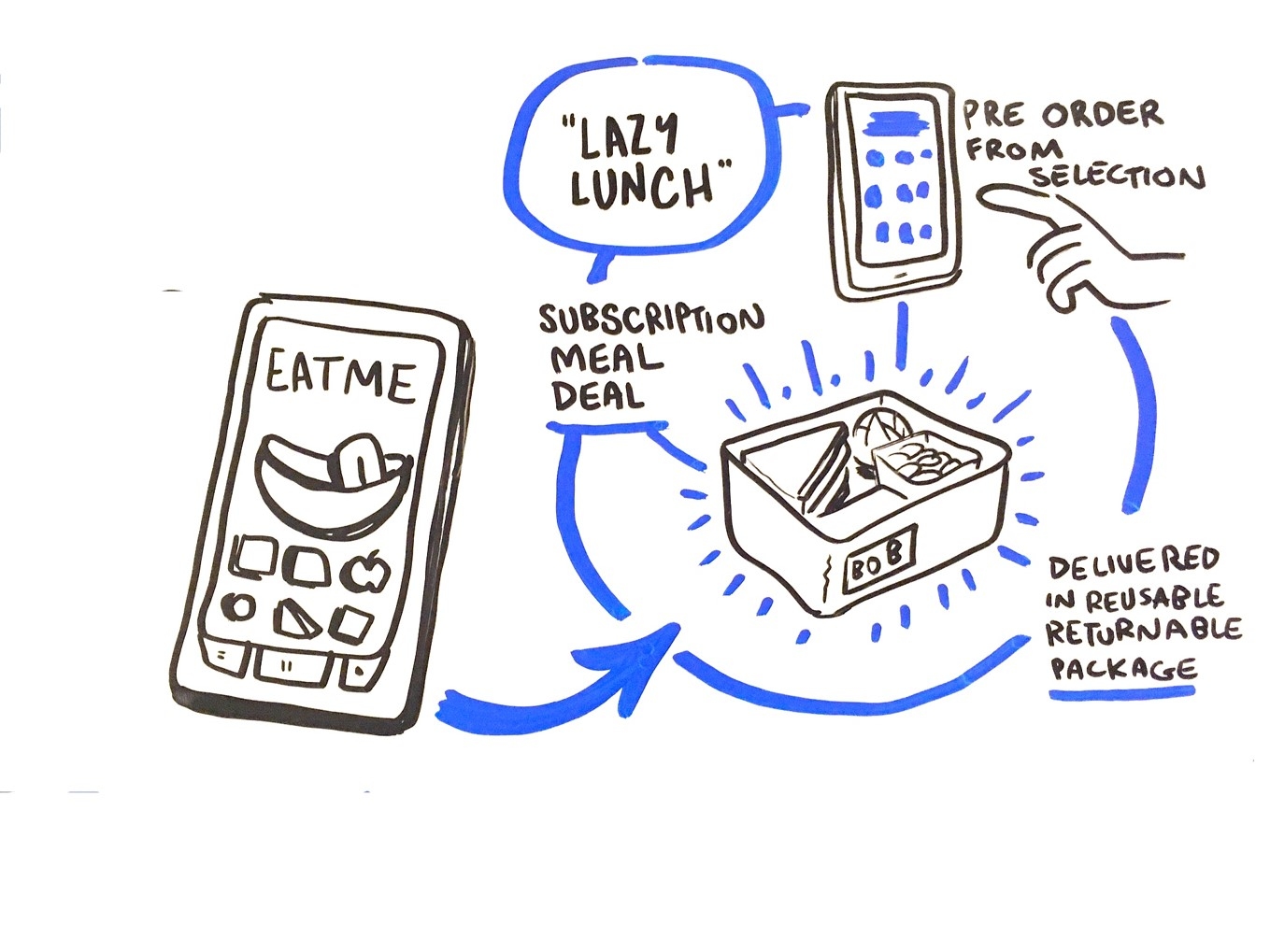Register for free and continue reading
Join our growing army of changemakers and get unlimited access to our premium content

edie reporter Sarah George explores how Thinkathons could help corporates harness creative minds to tackle the plastics crisis
It’s Day One of the Sustainability Leaders Forum (5 February) – edie’s flagship sustainability event of the year. After a flurry of insightful and inspiring morning sessions (Jonathon Porritt’s rousing keynote a particular highlight), a select group of sustainability professionals, packaging experts and creative designers are ushered into a side room which houses two large roundtables and some blank whiteboards.
The room fills quickly. Reboot Innovation director Chris Sherwin (facilitating) and plastics campaigner Dhruv Boruah (supporting) are inside already, and before I know it, the 23 seats around me are all taken. Representatives from the likes of Procter & Gamble (P&G), Unilever and Hilton Hotels are all here and the conversation is flowing – everyone is eager to discuss one topic and one topic only: how to solve the plastics problem.
It’s no surprise, then, that the group are here for the Plastics Thinkathon – a mini-event within the Sustainability Leaders Forum which is focused on thinking outside of the box; challenging the status quo and coming up with new ideas that could solve plastic pollution – all in just a few hours. Today’s session – the first of two – will challenge attendees to develop innovative solutions to single-use plastic-based packaging or products.
Sherwin introduces: “Within our sphere, we now all know about the scale of the plastic pollution problem – so I’m not here to lecture you about the environmental consequences of our plastic consumption… What I am here to do is to help us turn a market failure into a business opportunity.”

We are shown a few PowerPoint slides to underline the scale of the challenge. But, rather than displaying the now-all-too-common images of marine life entangled in plastic, Sherwin shows us a selection of charts detailing the ways in which the current plastics value chain is broken. Drawing on findings from the Ellen MacArthur Foundation, these charts highlight the fact that between $80bn and $120bn is now lost from the global economy every year due to a non-circular system for plastic packaging – making the plastics pollution crisis an economic challenge as well as an environmental one.
In 2015, Sherwin explains, almost a third (32%) of plastic packaging produced globally was lost from the economic system, while just 14% was captured for reuse, recycling or safe composting. The room is silent for a moment as the scale of the opportunity sinks in. A few of us are immediately fearful that we will be unable to achieve any impactful ideas to seize such an opportunity in the 150 minutes we have. But Sherwin allays these concerns by telling us that Thinkathons like this are the way forward – they are “a fantastic way to unlock new sustainability opportunities” which can become “not just thoughts in a chamber, but real and scalable solutions”. He notes that the formation of AirBnB – a company now worth more than $30bn – was, in fact, the result of a hackathon back in 2003. This seems to lift the mood, and those at my table begin to poise their notebooks and pens, ready for action.
Sherwin encourages each table to choose a specific challenge that we would like to solve within the overarching topic of single-use plastics. We are tasked with producing a list of 10 initial ideas to solve that challenge within an hour, with a view to streamlining this ‘shortlist’ of challenges to one standout concept by the end of the session.
Defining the challenges
My table, which includes representatives from the likes of Coca Cola European Partners (CCEP), L’Oreal and John Lewis & Partners, collectively agrees to target an issue with which most people have a regular touchpoint: supermarket meal deals. The other Thinkathon team chooses small-format toiletry ‘gift packs’ offered by hotels. Both of these areas, Sherwin says, are “pretty meaty challenges”, but equally both are calling out for innovative solutions.
My ‘meal deal’ team immediately concurs that, given that just 9% of plastic produced to date has been recycled, we must think up solutions that go beyond recyclability. We also conclude that our demand for food-on-the-go has long since outpaced investments into publicly-available recycling infrastructure and a cultural shift towards recycling in public.
“What is being classed as leadership in this field is changing all the time,” says CCEP’s head of sustainability Nick Brown. “Even if you make something recyclable, it could still be littered. We’re now seeing alternatives marked as biodegradable or compostable coming onto the market, but people still don’t know what to do with them – they can contaminate recycling streams and, due to misunderstandings, people might throw them into the environment.”
With this challenge in mind, we choose to step back a stage and explore why it is that consumer demand for pre-packaged lunches has soared to such heights in recent years. Could we perhaps replicate the factors which make them so popular with single-use-plastic-free alternatives; or could it be a behavioural innovation that is needed?
Indeed, hotel firm IHG’s corporate responsibility director Karina O’Gorman notes that consumers are likely to opt for meal deals nowadays due to a general “lack of time or motivation” to pack their own lunches, compounded by a desire to either choose from a broad range of foods or to select a high-quality version of their favourite meal every day. Cost, John Lewis & Partners’ senior corporate responsibility manager Zoe Brady adds, is another key factor, with most meal deals now costing £3-£5.
The Lazy Lunch
The focus should, therefore, be on designing a zero-plastic-waste concept which keeps production costs low, ease of purchase high and still offers shoppers the products they know and love. It is up to Tom Firth, a senior designer brought in from design agency Path, to bring these elements together via a visualised concept.
After sketching several iterations of a packaging-free lunch, Firth remarks: “This looks like the sort of thing you’d pack for your kids to take to school. Obviously, from your house to their school, the food needs less packaging protection than it would in a supermarket shipment.”

Firth’s sentiments in themselves spark an idea which, rather than looking to a future of bio-based packaging, harks back to an idea first conceptualised in the 1980s: the recreation of a lunchbox subscription service.
IHG’s Gorman argues that similar subscription models – such as HelloFresh for recipes and Abel & Cole for produce – are now continually emerging in the UK market, mostly successfully. Gorman also notes that a lunchbox would have “retro appeal and nostalgia” for consumers whilst helping food outlets prepare food to order and therefore slashing their own food waste outputs.
The team now have a clear focus and we begin fine-tuning the details of a modern-day lunchbox subscription concept, which we dub ‘Lazy Lunch’. The Lazy Lunch offering would be run by a central business in partnership with big-name brands, the team agrees, with consumers able to place orders via a mobile app; enabling them to select their meal from pre-defined lists. Once ordered, the meals would be packed in a reusable metal or durable plastic lunchbox, ready for collection or delivery (by a low-carbon mode of transport, naturally). Customers would then be incentivised to return the lunchbox with either a deposit-return system or a loyalty scheme.
With just seconds to spare before we break for our own lunch, Path’s Firth finishes scribbling the details of the concept onto his flipchart. When I glance across at the other table, I see their designer is doing the same. It is time to unveil the results of our two-and-a-half-hour brainstorming.
With ideas finalised and the final chocolate brownies from our working lunch devoured, it’s time to share our concepts with the other delegates – and to have them critiqued by the other table.
Our Lazy Lunch concept, presented by Firth, proves a hit with our counterparts. They conclude that such a subscription-based model would make ordering plastic-free lunches accessible whilst retaining almost all of the benefits offered by a meal deal (bar the fact that it may be unsuitable for supermarkets).
Solid shampoos
We are then shown the other table’s solution – a new product to tackle the plastic footprint of hotel toiletries. It’s a product they have dubbed ‘Sin Agua’. Sin Agua consists of solid-format versions of shampoo, conditioner, body lotion and hand soap, all housed in a reusable bamboo box. It was inspired by health and beauty retailer Lush’s ‘naked’ stores, in which toiletries are sold in solid formats only.
Path’s founder Thomas Herman, who led on Sin Agua’s visualisation, explains: “Our team discussed how having bathroom products in liquid formats was a fairly new concept – we previously relied on things like toothpaste and bar soaps, so perhaps this could bring them back into vogue.
“The benefit to the company comes in the form of reduced shipping costs and not paying for single-use packaging, while the reusable box will be beautifully-designed, adding a luxury element for the consumer.”
Herman goes on to explain that any hotel using the concept could display instructions in its bathrooms as standard, and that they could switch the biodegradable sachets such as seaweed-based alternatives as a “stop-gap” solution to associated behaviour change challenges.
Behavioural change
Of course, this Thinkathon didn’t solve the issue of plastics pollution. But within this room there is a great collective sense of pride that, in just 150 minutes, a group of 24 individuals have united around a common cause and developed two highly innovative and potentially game-changing solutions which could take days, weeks, months or even years for large corporates to conceptualise themselves.
Sherwin’s feeling it too. “I’m very impressed with both teams – you have all managed to push yourselves past what any one business does and taken a really deep dive into the bigger ideas which could drive wider change,” he says.
“It was incredibly useful to think at quite a targeted level and not to talk about plastics as a general, abstract problem, but to realise concrete solutions and, overall, we’ve over-delivered.
“However, in terms of innovation, we are really only just starting to scratch the surface.”
With that in mind, the room leaves hopeful that tomorrow’s session – which will focus in on the behaviour change aspect of the plastic puzzle – will provide an even deeper dive into the plastics value chain’s biggest problems and generate even more ambitious solutions.
The Plastics Hub at edie Live 2019
Those wishing to take part in edie’s next plastics-themed event are invited to join us at the NEC in Birmingham for edie Live 2019, where our hugely popular Mission Possible Plastics Hub content is coming to life.
Taking place on 21-22 May, edie Live will house a dedicated area for industry professionals to connect with one another, share circular economy ideas, meet packaging solutions providers and discover ground-breaking plastic waste innovations.
Designed by edie’s editorial team, this special area of the show will include single-use plastics roundtable discussions, packaging solutions stands and a professionally-facilitated Thinkathon. For more information and to register for free, click here.
Sarah George
Sarah George



Please login or Register to leave a comment.